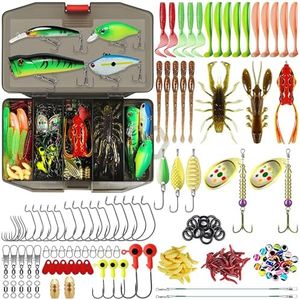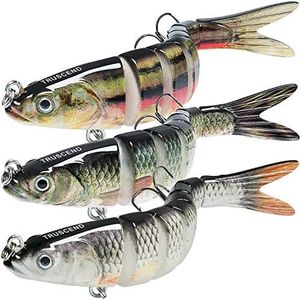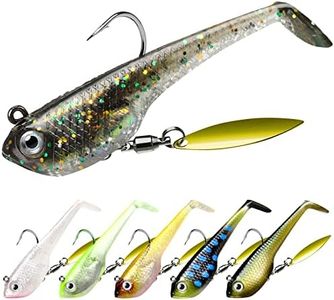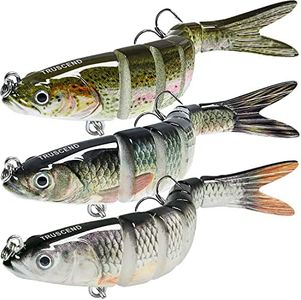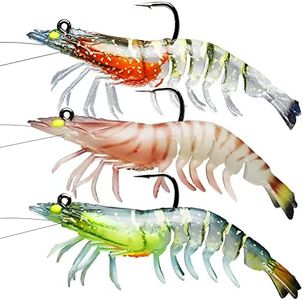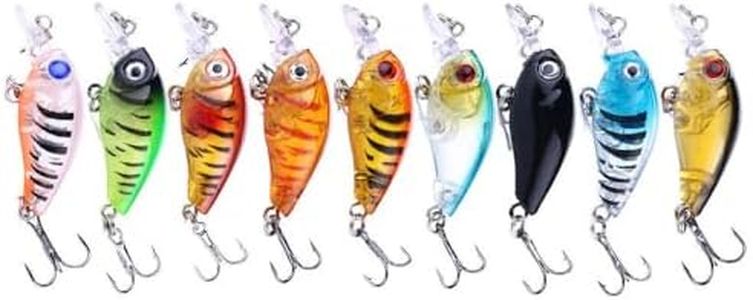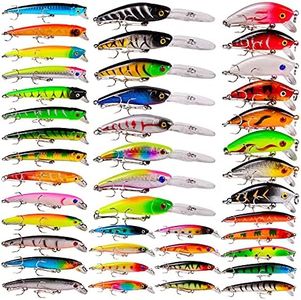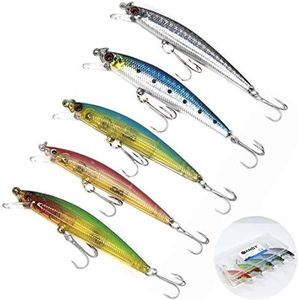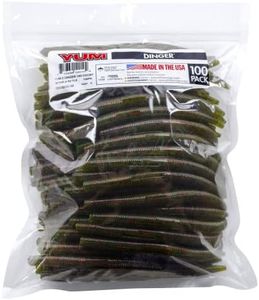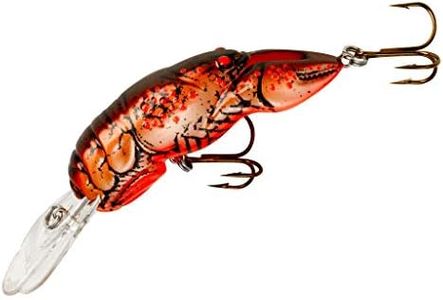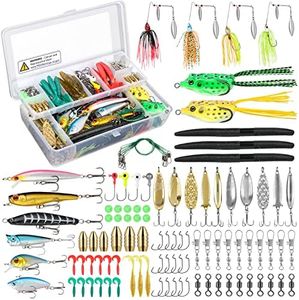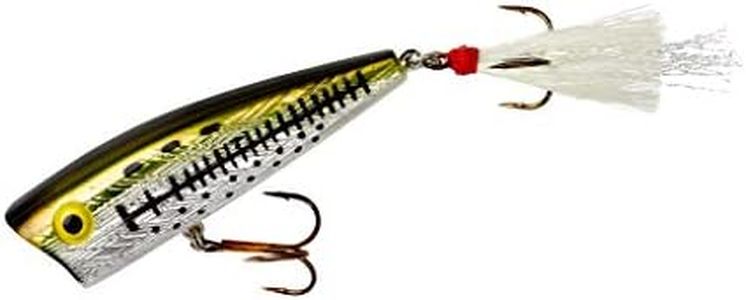We Use CookiesWe use cookies to enhance the security, performance,
functionality and for analytical and promotional activities. By continuing to browse this site you
are agreeing to our privacy policy
10 Best Smallmouth Bass Lures
From leading brands and best sellers available on the web.Buying Guide for the Best Smallmouth Bass Lures
Choosing the right lure for smallmouth bass fishing can dramatically improve your chances of success on the water. The process involves considering where you'll be fishing, the time of year, and the typical behavior of smallmouth bass. To make an informed choice, focus on understanding the main features and types of lures, as each one is tailored for specific situations and fishing styles. Identify your main fishing environment—lake, river, clear or murky waters—and think about the activity level of the fish, since smallmouth bass can be picky depending on weather and season. Knowing the key specs will help you narrow down your choices and select lures that not only attract fish but also match your experience level and comfort with different retrieval techniques.Lure TypeLure type refers to the general category or action of the lure, such as crankbaits, jigs, soft plastics, spinners, or topwater lures. This is important because each type works best under certain conditions and for specific fishing styles. Crankbaits and spinners cover water quickly and can provoke strikes, while jigs and soft plastics are versatile for slower, more targeted fishing. Topwater lures create surface commotion, ideal for aggressive bass. To pick, think about where and how you like to fish—if you prefer active, fast fishing, pick spinners or crankbaits; if you’re fishing in rocky or weedy areas, jigs or soft plastics are often a safer bet.
Size and WeightThe size and weight of a lure determine how it moves in the water and how far you can cast it. Smaller, lighter lures are good for clear water, shallow areas, and for finicky bass that might be spooked by bigger baits. Heavier and larger lures work well in deeper water, faster currents, or when trying to attract larger fish. Match the size and weight of your lure to the body of water, weather conditions, and the typical forage of smallmouth bass in your area, adjusting for subtle presentations in calm, clear water and bolder ones in murky or rough conditions.
ColorLure color affects visibility and attraction. Bright, flashy colors work best in murky water or low-light conditions, making it easier for bass to spot the bait. Natural colors like browns, greens, and silvers are best in clear water, as they better mimic the appearance of real prey. Try to match the lure color to the prevalent baitfish or insects where you’re fishing, and remember, sometimes a contrasting color can trigger strikes when the usual choices aren’t working.
ActionAction describes how the lure moves in the water—wobbling, twitching, darting, or staying still. Some lures are designed to be erratic, mimicking wounded prey, while others swim straight or sink and settle to the bottom. The right action depends on how active the smallmouth bass are and the time of year—faster, more aggressive actions might be better in warmer water when fish are lively, while subtle, slower movements may be necessary when bass are sluggish or water is cold.
Hook Type and SizeThe hook type and size can affect your hookup rate and how well the lure works. Smaller hooks match small lures and finesse presentations, while bigger, stronger hooks are used for larger lures and more aggressive fishing. Some lures have exposed hooks, while others have weed guards or concealed hooks to avoid snagging. Consider the size of fish you expect to catch, the type of cover you’ll be fishing, and your personal preference for hook setting when making a choice.
